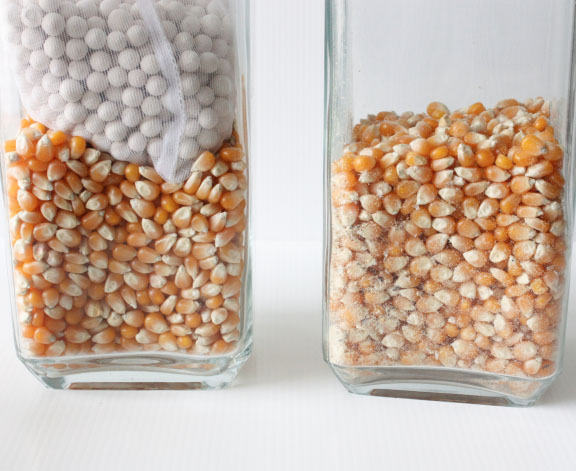Project Description
“The degree and extent of post-harvest losses, and particularly those caused by insects, has been the subject of considerable debate and speculation. With an increasing world population to feed it is often suggested that a reduction of such losses can lead to substantial increases in food availability, particularly in the developing world. Figures commonly quoted to support loss reduction programmes have ranged from the oft quoted figure of 10% for world-wide losses of cereals in storage to, for example 35% for grain losses in India and 46% for losses of sorghum in Nigeria…”
—From RA Boxall – Post-harvest Losses to Insects – a World Overview.
Proper storage can reduce considerably the damage caused by insects. Insects can only flourish above a minimum RH. Storing seeds (or other products) in a RH lower than this threshold will ensure that any insects present are unable to grow or reproduce.
The problem, however, was how to produce these low RH environments in an efficient and cost-effective way. Most desiccants are unable to reduce the RH sufficiently and other methods are often expensive in infrastructure investments and running costs.
Trials performed by Dr. Prof Kunusoth at ANGRAU University, Hyderabad, India, with the support from USAID HortCRSP have shown that the drying beads provide a simple but efficient way to reduce the air humidity sufficiently low to eliminate insect damage.

